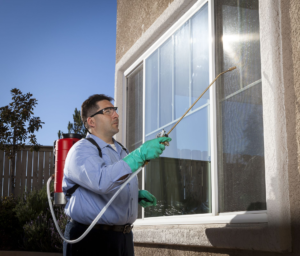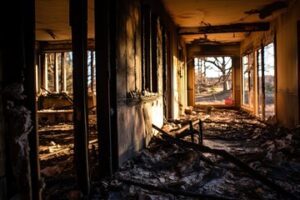Real estate agents can help you buy and sell homes, apartments, condos or commercial properties. Realtors are members of the National Association of Realtors who follow a strict code of ethics and advocate for homeownership across the country.

It’s a good idea to ask friends and family for referrals and interview several candidates before hiring one.
A Realtor is a licensed real estate professional who is a member of the National Association of Realtors (NAR). Those who are members must adhere to NAR’s Code of Ethics, which is slightly different from the codes that most state real estate commissions have. In addition to adherence to the Code of Ethics, membership in NAR also allows Realtors to access a variety of business services that aren’t available to non-members.
Local Realtor associations are often called “Boards of REALTORS(r)” or “Associations of REALTORS(r)”. Joining a local organization will provide you with multiple member benefits and advocacy resources. Additionally, joining a local BOR or Association will help you connect with other real estate professionals in your area, which can be beneficial for networking and establishing relationships in the industry.
The NAR has several different levels of membership. Those who are members of the NAR receive representation at local, state and federal levels in the form of lobbying, meetings with legislators, conferences and more. They also have access to a wide range of real estate education and professional development opportunities.
NAR is one of the largest trade associations in the world, with over 1.3 million members across the country. Its members include brokers, salespeople, property managers, appraisers and counselors. In addition to representing their clients’ interests, NAR also advocates for homeownership and maintains reasonable credit standards.
Real estate professionals who are members of the NAR must also belong to a local board or association. The local association will determine whether they meet the qualifications for membership, which is usually based on their number of years in the business and whether they are active in the real estate profession. A broker or salesperson must have a principal/designated broker who is a member of the local association.
If a real estate agent or broker does not meet the requirements for membership in the NAR, they may still join as an Institute Affiliate Member. This type of membership is for individuals who are affiliated with the real estate profession but do not hold a license to practice as a realtor. An individual who wants to be an Institute Affiliate Member must meet certain criteria, including having a CCIM, SIOR or CPM designation.
Licensing
In order to work as a real estate agent or broker, you must be licensed by your state’s real estate regulatory agency. The requirements for licensing vary by state, and you can find them by performing an Internet search for “[state name] real estate.” In general, you will have to take pre-licensing courses and pass a state real estate exam. The exams are typically computerized and consist of two parts: a national portion covering general real estate principles and practices, and a state-specific section on laws, regulations, and policies governing the practice of real estate in your specific state. The exam consists of multiple-choice questions, and you must pass both parts to become a licensed real estate salesperson. Typically, you can take the exam as many times as you want within a two-year period, and retakes are free if you fail one part of the exam.
If you choose to pursue a license, you should look for a reputable online or in-person school that offers New York State Department of State (NYSDOS) approved pre-licensing classes. You should also consider purchasing a real estate exam prep product, which will help you prepare for the state exam and increase your chances of passing it. Many of these products are available for as little as $99. You will also need to pay license application fees and undergo a background check. Some states also require that you have errors and omissions insurance, which you can purchase from your brokerage.
Real estate agents must also be members of the National Association of Realtors (NAR). NAR membership opens up networking and leadership opportunities at local NAR boards, and allows you to use the “Realtor” trademark on your marketing materials. Moreover, NAR’s Code of Ethics requires real estate professionals to follow ethical guidelines and promote the best interests of their clients.
After working as a real estate agent for several years, you can apply to become a licensed real estate broker. This involves taking additional pre-licensing courses and passing a state broker exam. Once you are a licensed broker, you can use the “Realtor” trademark on all your marketing materials and business cards. In addition, you can join your local NAR board to access the MLS and open up additional business opportunities.
Education
A career as a real estate agent is one of the most popular choices for people looking to make money. It requires a series of trainings and a licensing exam. In addition, you need to follow the National Association of Realtors’ Code of Ethics and pay a one-time membership fee and annual fees. A licensed real estate professional also has the option of earning additional certifications and designations to further their expertise. These programs range from land consulting to commercial investment, and you can find a complete breakdown of options on the NAR website.
The requirements for becoming a real estate agent vary by state, but all states require you to take pre-licensing classes and pass a state exam. These classes are usually offered by a college, university or real estate school. The courses cover topics such as real estate law, property management and the MLS (Multiple Listing Service). Some of the states also have a minimum score you must get to pass the test. If you fail the first time, there are often retake options available.
Some agents choose to attend a college to get their degree, which can help them become more attractive to brokerage firms. A degree can also give you a better understanding of the business and improve your chances of passing the exam. Popular majors include marketing, finance and accounting.
Once you have a license, it’s important to keep up with your continuing education requirements. You can usually find out your state’s required CE hours by contacting your local real estate board or broker. You can also take online continuing education courses to meet your state’s requirements.
Some agents opt to pursue a master’s degree in real estate to get a more competitive edge. These programs usually last two years and provide a broad overview of the real estate industry, including law and finance. Some large real estate firms also offer financial aid to employees who are pursuing master’s degrees. This is particularly true if the employee is planning to become a managing broker and is responsible for supervising other agents.
Experience
A Realtor is a real estate agent who has chosen to become a member of the National Association of Realtors (NAR). A NAR membership can provide you with access to industry resources and a network of professionals. It also allows you to keep current with changing market trends and legal developments. NAR is an excellent choice for anyone who wants to advance their real estate career.
NAR members are licensed real estate agents and have access to the Multiple Listing Service (MLS), which is a database that contains information on homes for sale. They are also required to attend educational courses and seminars that provide them with the skills needed to succeed in their careers. As a NAR member, you are able to participate in NAR’s advocacy efforts and lobby for legislation that impacts the real estate industry.
In addition to preparing property marketing materials and facilitating home sales, a Realtor can also help clients with obtaining mortgage financing. They can also assist with coordinating property closings and conducting title searches. Additionally, they can advise sellers on how to prepare their homes for sale and help buyers locate the best property at a reasonable price.
A Realtor must have strong interpersonal skills to effectively communicate with clients and other agents. They must be able to empathize with their clients during what can be a stressful time in their lives. A good rapport with their clients can increase the likelihood of a sale and lead to referrals.
NerdWallet has a number of articles that can help you decide whether real estate is the right field for you. These articles include a primer on the real estate industry, an overview of common pitfalls, and a list of tips for new agents. The site can also help you find a local real estate agent and compare their qualifications.
Becoming a Realtor can be challenging, but it can also be very rewarding. A successful Realtor can make a substantial income while helping people find the perfect place to call home. They must be willing to work long hours and put in the extra effort to compete with other real estate agents.


